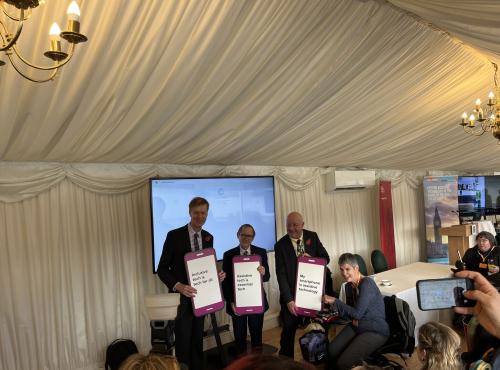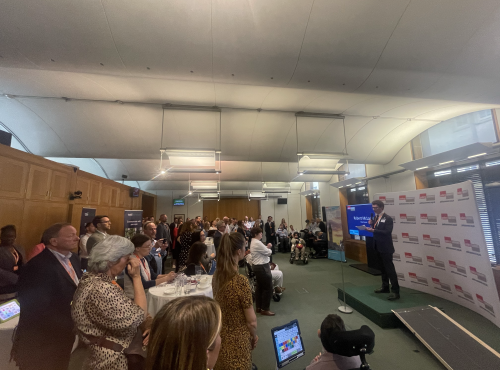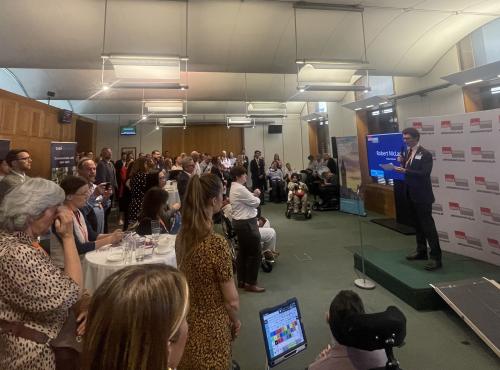How can the National Strategy for Disabled People improve access to assistive technology?
The current parliamentary term is set to be a landmark in disability policy. Last December’s Queen’s Speech confirmed a pledge in the Conservative Party’s general election manifesto to publish the UK’s National Strategy for Disabled People. to tackle challenges faced by disabled people in all aspects and stages of their lives.
2020 is a milestone year in disability legislation, marking important anniversaries for the Sick and Chronically Disabled Persons Act (1970), the Disability Discrimination Act (1995) and the Equality Act (2010). Each of these statutes has been critical in opening up society for disabled people by removing obstacles and creating new opportunities for their inclusion.
The All-Party Parliamentary Group for Assistive Technology (APPGAT) is working with the government, industry, academia, and disabled people themselves to ensure that the new strategy takes full advantage of the enabling potential of technology.
To that end, on Monday 23rd March we held a webinar on the role of assistive technology within the National Strategy for Disabled People. Chaired by Policy Connect’s Policy Manager for Assistive Technology, Geena Vabulas, the meeting heard presentations from the Academic Director of University College London’s Global Disability Innovation Hub Dr Catherine Holloway and Policy Connect’s Head of Health and Accessibility Robert McLaren, with a keynote address from the Director of the government’s Disability Unit Marcus Bell.
Since its move from the Department of Work and Pensions to become part of the Cabinet Office Equalities Hub last November, the Disability Unit has been charged with coordinating disability policy across government, including the development of the National Strategy for Disabled People. This represents a wonderful opportunity to encourage inter-departmental cooperation to remove barriers faced by disabled people throughout their lives.
In his keynote, Marcus Bell set out the five broad themes that are likely to be at the heart of the strategy:
- Access to justice
- The built environment
- Tackling stigma and harassment
- Independent living
- Products and services
Marcus recognised assistive technology as a ‘very important’ cross-cutting theme of the strategy. He said: ‘assistive technology has the potential to really help disabled people access things they can't currently access.’
Marcus noted that the government’s feedback so far from disabled people about their priorities goes well beyond the typical list of welfare and social security issues that policymakers usually seek to address on their behalf. These include the problems caused by being unable to enjoy a full social life and wanting to undertake activities that others might take for granted such as shopping, sport and cultural events.
One of the main focuses of discussion was the ‘fault-lines’ between different parts of the public sector, undermining support for disabled people. This was illustrated by attendees reporting the effects of the disconnect between the Disabled Students Allowance and the Access to Work programme which can make disabled graduates’ transition to the workplace more difficult.
Another divide that participants brought to the fore was the gap between the accessibility needs of disabled people and the practices of the technology sector. Inaccessible and incompatible technologies are common barriers to disabled people hoping to make the most of the latest technological products and services. The Disability Unit hopes to encourage technology companies to engage more effectively with disabled people. As Robert pointed out, the assistive technology sector has experience co-designing with end-users and can lead the way in this area.
A final key topic that emerged from the session was the importance of data. The paucity of data about assistive technology services is one of the most frequently discussed issues at APPGAT meetings. The government expects data and evidence to be a central component of its new strategy, which is likely to include a plan to collect more and better data about disability over the coming years.
Dr Catherine Holloway used her presentation to reflect on the common misperception that there are no benefits to being disabled, only costs. One of the aims of innovative disability policy should be to realise the huge economic advantages of a ‘diverse workforce and inclusive society’.
The strategy is a valuable opportunity to forge a fresh approach to disability policy that unleashes the social and economic potential of disabled people.
In his closing remarks, Marcus indicated that it would be useful to meet the Group again as the strategy continues to take shape. Policy Connect and the APPG for Assistive Technology plans to follow through on Marcus' offer with a series of dedicated events which will explore the impact of assistive technology services on disabled people entering the workplace.
For on-going updates, please sign up to our newsletter here or follow us on Twitter @AT_APPG.



